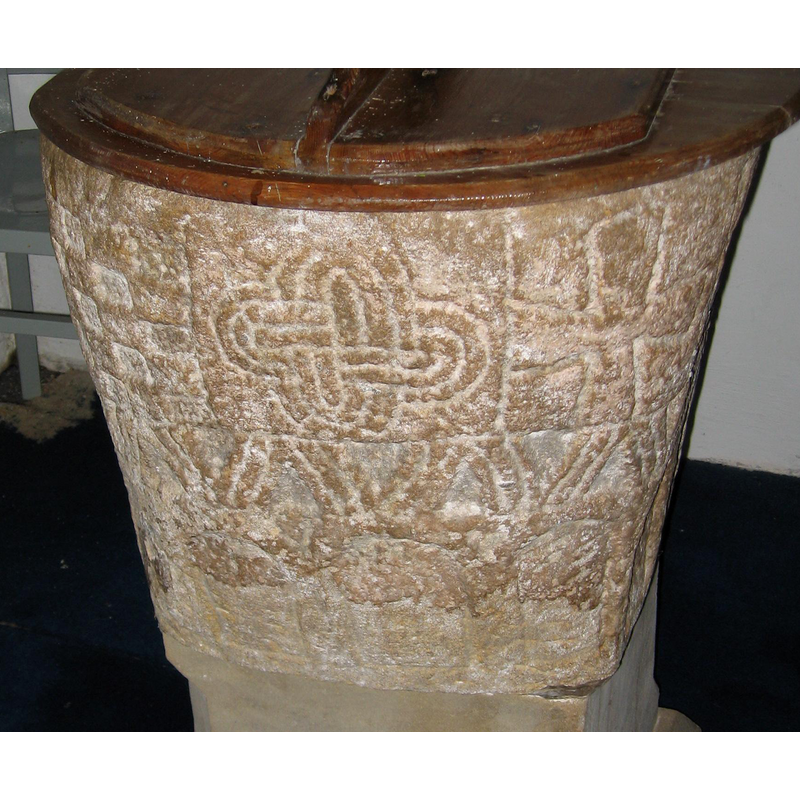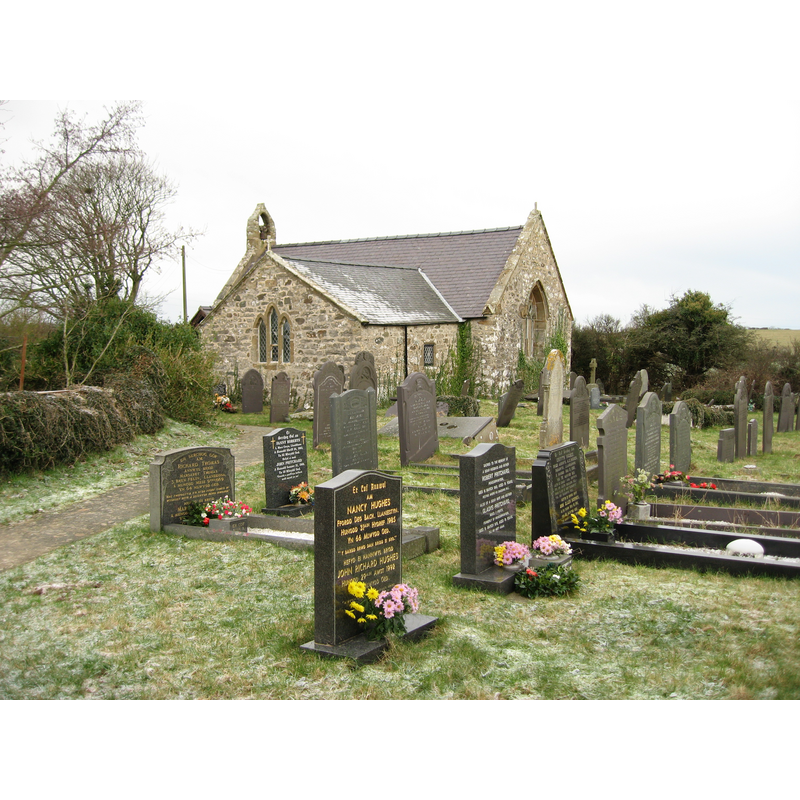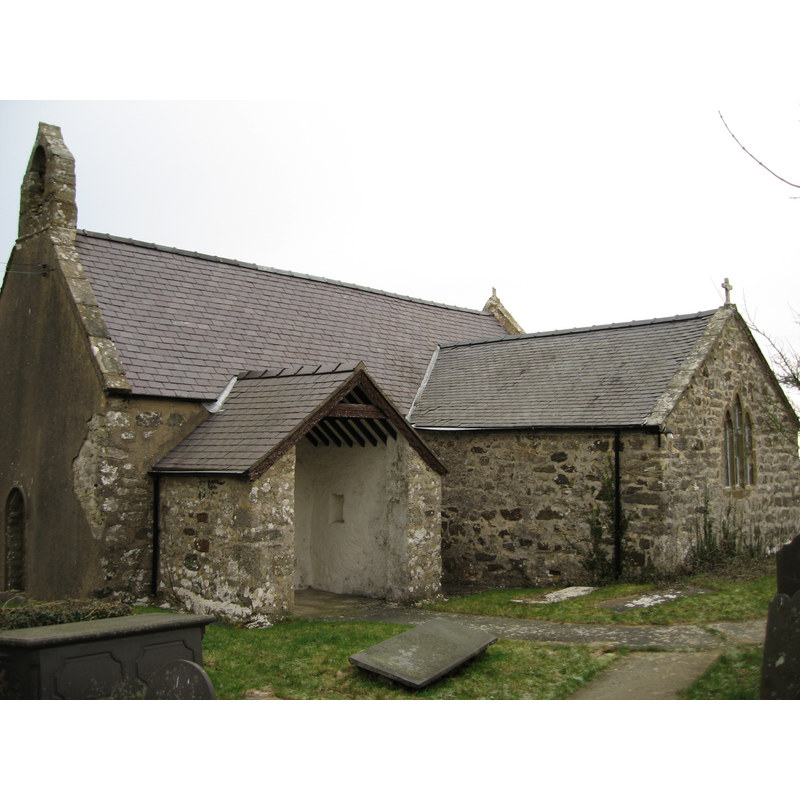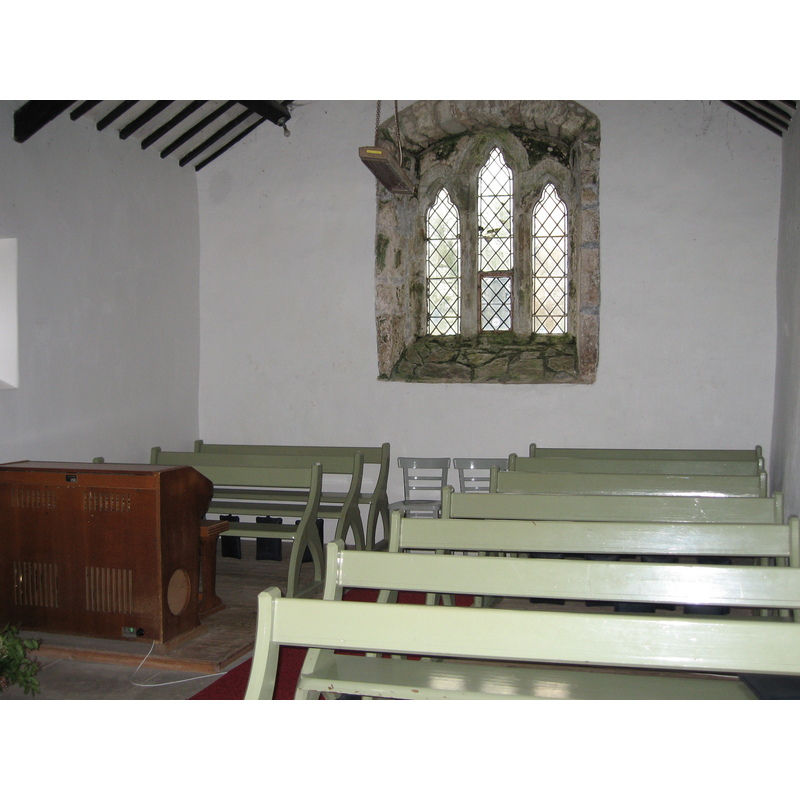Llaniestyn / Llan Jestyn / Llaniestin

Image copyright © Trade Mawr, 2005
CC-BY-SA-3.0
Results: 13 records
B1R01: design element - patterns - chequered
B1R02: design element - motifs - sawtooth
B1R03: design element - motifs - interlace - cross-shaped
B1R04: symbol - cross - Greek - Maltese
B1R05: design element - patterns - spiral fluting or piping
B2R01: design element - motifs - chevron - nested chevrons
B3R01: design element - architectural - arcade - blind - round arches
view of basin
view of church exterior - churchyard, cemetery
view of church exterior - southwest end
view of church interior - nave - looking west
view of font
INFORMATION
FontID: 09117LLA
Object Type: Baptismal Font1
Church/Chapel: Parish Church of St. Iestyn
Church Patron Saints: St. Iestyn [aka Iestin, Jestyn, Jestin, Justinian, Yestinus -- 6th century Breton noble -- hermit and martyr of Ramsey Island, Pembks (Farmer (1987)]
Country Name: Wales
Location: Gwynedd
Directions to Site: Located on the western end of the Lleyn Peninsula, 10-12 km SW of Pwllheli, 30-35 km WSW of Pothmadog
Historical Region: formerly Anglesey
Font Location in Church: Inside the church
Century and Period: 11th - 12th century, Pre-Conquest? / Norman?
Cognate Fonts: Thematic similarity in its ornamentation with the fonts at Heneglwys and Llanbeulan
Font Notes:
Click to view
Described and illustrated in H.L. Jones, The Archaeological Journal (June 1844: 122-126). In Jones time, ca. 1844, the font rested directly on a two-step plinth; the base on which the font now [2010] stands must have been added later in the 19th century. Described in Lewis' Dictionary edition of 1848: a remarkably curious font probably of the twelfth century". Ditto in the National Gazetteer (1868). Romilly Allen (1884) writes: "The cross symbol does not occur frequently on fonts of the Norman period. Early examples are to be found at Llanfair y Cymwd, and at Llan Jestyn, in Anglesey [fn], also at Kea, in Cornwall" [footnote: "Archaeological Journal, vol. i, p. 126"]. Noted later in Romilly Allen (1888) as one of several "examples of fonts with ornmament of early character". Described by Peter Lord, in Diwylliant... (1998-2003) as a baptismal font that "carries a very similar vocabulary of images" as those at Heneglwys and Llanbeulan, "including a chequerboard design" found on the side of the latter. Described and illustrated in Thurlby (2006) who notes details of relation or similarity with the font at Llanbeulan and Tregaian. The shape of the basin is oblong, with rounded angles both in and out, and tapering sides.
MEDIUM AND MEASUREMENTS
Material: stone
Font Shape: oblong (mounted)
Basin Interior Shape: oblong
Basin Exterior Shape: oblong
LID INFORMATION
Date: modern?
Material: wood
Apparatus: no
Notes: oblong and flat, with a wooden handle; appears modern
REFERENCES
The Visual Culture of Wales = Diwylliant gweledol Cymru, Cardiff: University of Wales Press, 1998-2003
Allen, J. Romilly, "Notes on Early Christian Symbolism", N.S., VI, Proceedings of the Society of Antiquaries of Scotland, 1884, pp. 380-464; p. 395
Jones, H. Longueville [Revd.], "Remarks on some of the churches of Anglesey", 1 (June 1844), The Archaeological Journal, 1844, pp. [118]-130; p. 122, 124-125
Lowthian [of Kellington], John, "On ablution, baptism, fonts, &c.", 95-ii, December 1825, The Gentleman's Magazine: or, Trader's monthly intelligencer, 1825, pp. 511-512; [www.genuki.org.uk/big/wal/AGY/Llaniestyn/Index.html] [accessed 26 December 2006]





![the font as it was ca. 1844, resting directly of a two-step plinth; it would be later mounted on the base on which it appears now [2010]](/static-50478a99ec6f36a15d6234548c59f63da52304e5/compressed/1100416004_compressed.png)